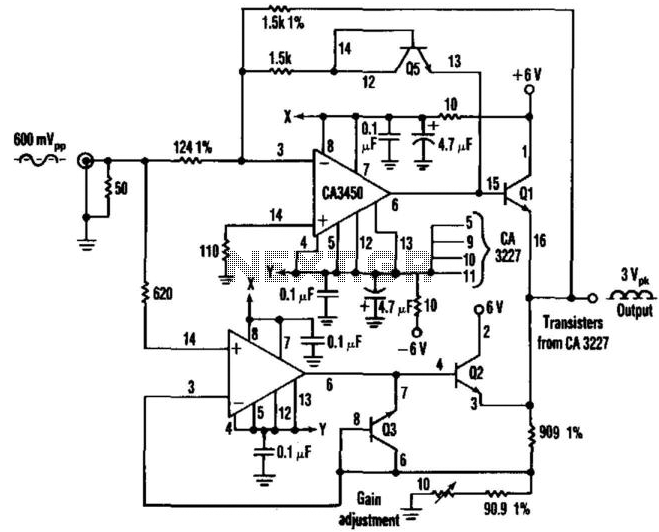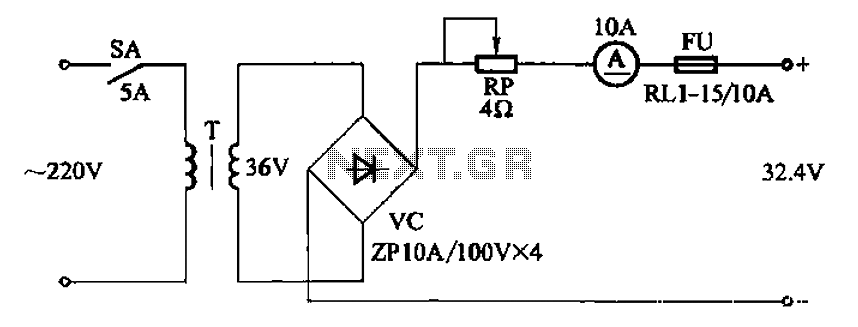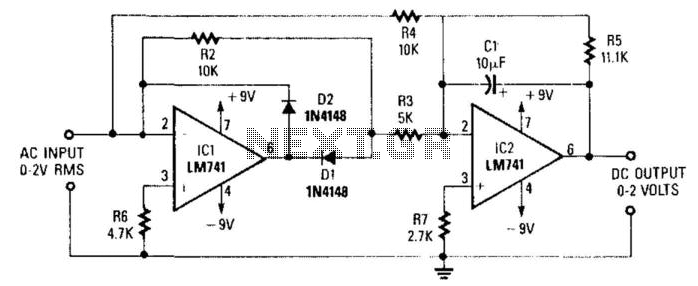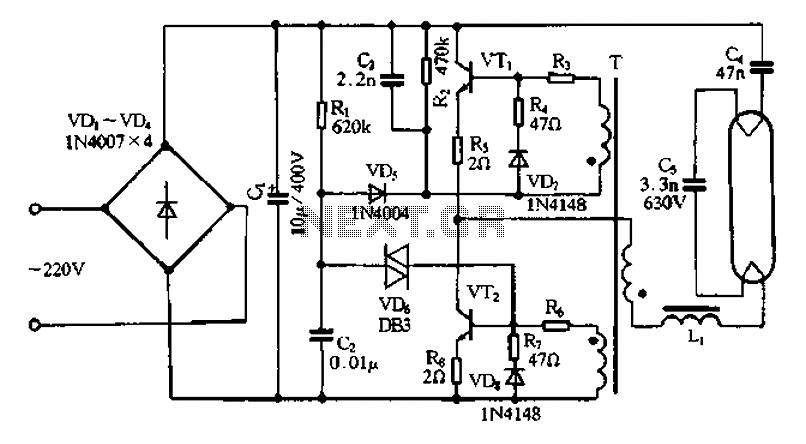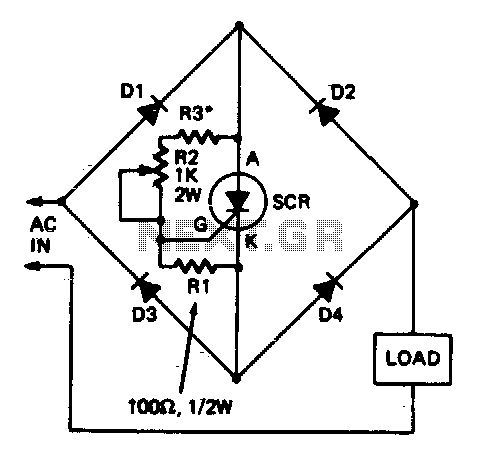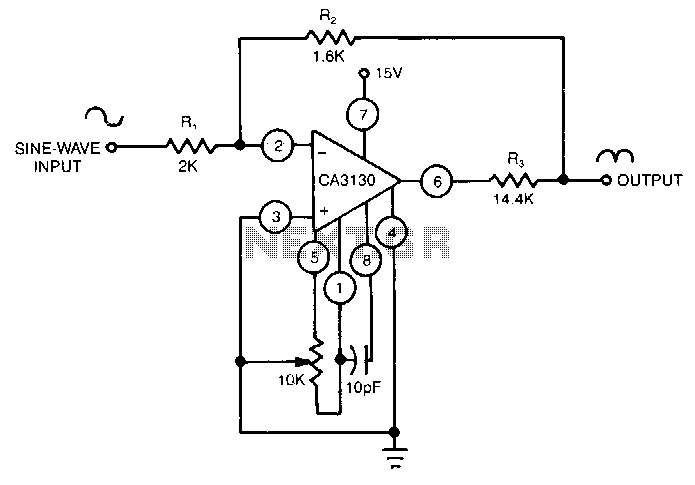
full-wave rectifier
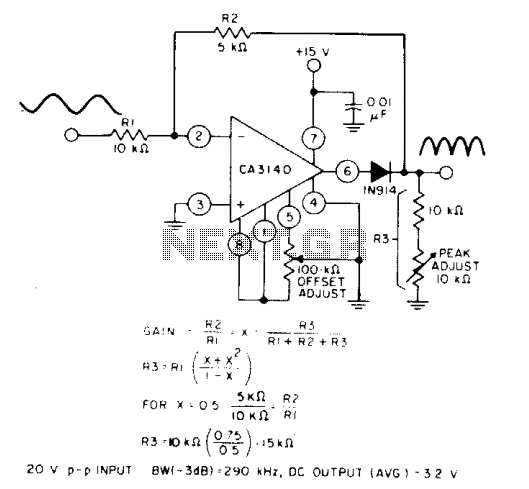
When the equality of two equations is satisfied, the full-wave output of the circuit is symmetrical. The circuit utilizes a CA3140 BiMOS operational amplifier in an inverting gain configuration.
The circuit design featuring the CA3140 BiMOS operational amplifier is characterized by its inverting gain configuration, which is essential for applications requiring signal inversion along with amplification. The CA3140 is notable for its high input impedance and low output impedance, making it suitable for interfacing with a variety of signal sources while minimizing loading effects.
In the inverting configuration, the input signal is fed into the inverting terminal of the op-amp through a resistor, typically denoted as R1. A feedback resistor, Rf, is connected from the output back to the inverting terminal. The gain of the circuit is determined by the ratio of these resistors, calculated using the formula: Gain = -Rf/R1. The negative sign indicates that the output signal is inverted relative to the input.
The symmetrical full-wave output is achieved when the circuit is designed to accommodate both positive and negative input signals, allowing for a complete waveform representation. This is particularly useful in applications such as audio processing and signal conditioning, where maintaining the integrity of the waveform is crucial.
The non-inverting terminal of the CA3140 is typically connected to ground or a reference voltage, ensuring that the op-amp operates within its linear range. Proper power supply decoupling is also critical to prevent oscillations and ensure stable operation, often achieved by placing bypass capacitors close to the power supply pins of the op-amp.
Overall, the implementation of the CA3140 in an inverting gain configuration not only provides the necessary signal inversion but also enhances the performance of the circuit through its high-speed capabilities and low noise characteristics, making it an excellent choice for various electronic applications. When equality of two equations shown in satisfied, full-wave output of circuit is symmetrical. The circuit uses a CA3140 BiMOS op amp in an inverting gain configuration. 🔗 External reference
The circuit design featuring the CA3140 BiMOS operational amplifier is characterized by its inverting gain configuration, which is essential for applications requiring signal inversion along with amplification. The CA3140 is notable for its high input impedance and low output impedance, making it suitable for interfacing with a variety of signal sources while minimizing loading effects.
In the inverting configuration, the input signal is fed into the inverting terminal of the op-amp through a resistor, typically denoted as R1. A feedback resistor, Rf, is connected from the output back to the inverting terminal. The gain of the circuit is determined by the ratio of these resistors, calculated using the formula: Gain = -Rf/R1. The negative sign indicates that the output signal is inverted relative to the input.
The symmetrical full-wave output is achieved when the circuit is designed to accommodate both positive and negative input signals, allowing for a complete waveform representation. This is particularly useful in applications such as audio processing and signal conditioning, where maintaining the integrity of the waveform is crucial.
The non-inverting terminal of the CA3140 is typically connected to ground or a reference voltage, ensuring that the op-amp operates within its linear range. Proper power supply decoupling is also critical to prevent oscillations and ensure stable operation, often achieved by placing bypass capacitors close to the power supply pins of the op-amp.
Overall, the implementation of the CA3140 in an inverting gain configuration not only provides the necessary signal inversion but also enhances the performance of the circuit through its high-speed capabilities and low noise characteristics, making it an excellent choice for various electronic applications. When equality of two equations shown in satisfied, full-wave output of circuit is symmetrical. The circuit uses a CA3140 BiMOS op amp in an inverting gain configuration. 🔗 External reference
